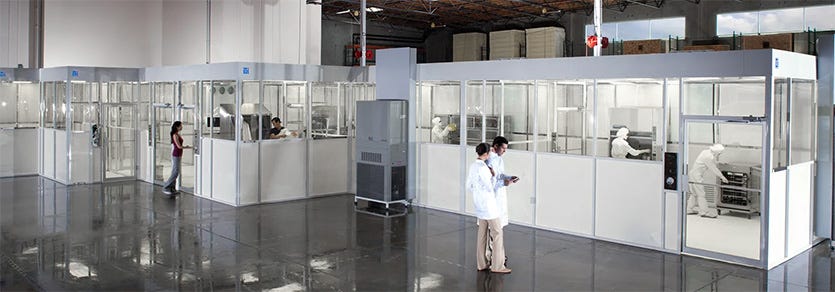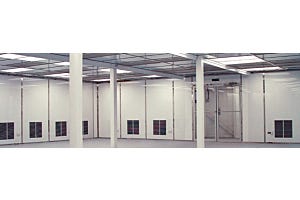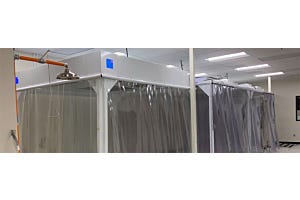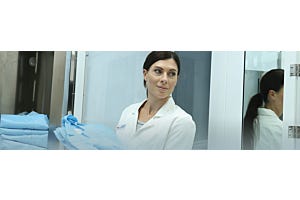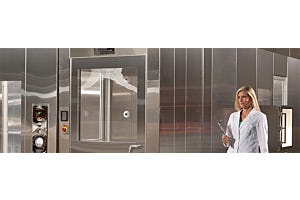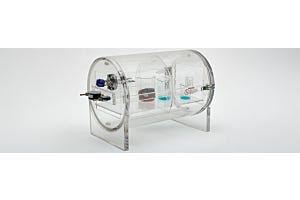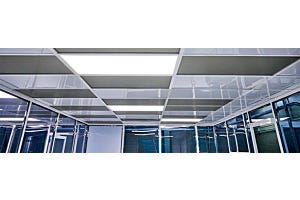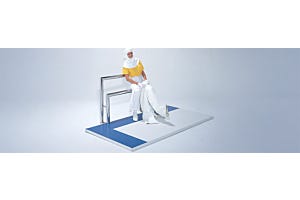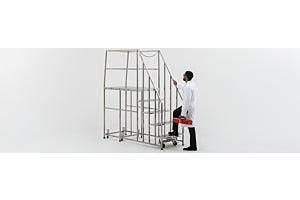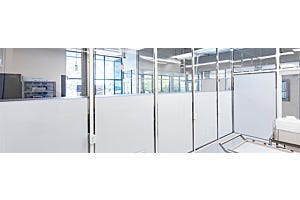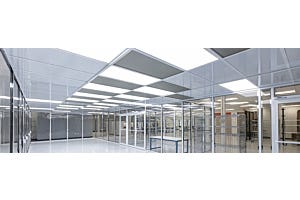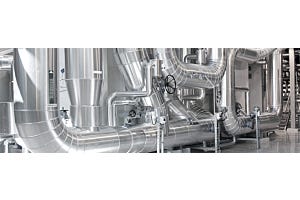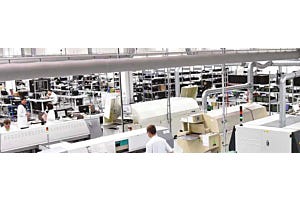ISO 8 cleanroom design requires the understanding of several methodologies and procedures that evaluate airborne contamination levels including ISO 14644-1 to ISO 14644-8, ISO 14698-1, and ISO 14698-2.
ISO 14644-1: Standardizes cleanroom air quality, classifying it into nine levels, from the very clean (ISO Class 1) to the least clean (ISO Class 9), based on the number of particles in the air.
ISO 14644-2: Methods for enumerating particles in cleanrooms, along with establishing sampling methods and protocols.
ISO 14644-3: Evaluation of filtration systems and HEPA, ULPA, and MERV filters in cleanrooms.
ISO 14644-4: Planning, building, and commissioning cleanroom facilities to meet specific standards.
ISO 14644-5: Approach to daily operations, training, and standardized procedures.
ISO 14644-6: Evaluation of tools and equipment for counting airborne particles.
ISO 14644-7: Standards for secondary equipment used in cleanrooms such as laminar flow hoods and isolators.
ISO 14644-8: Guides the assessment and ranking of in-room cleaning systems, focusing on the qualities and benefits of these specialized cleaning tools.
ISO 14644-1 | ISO 8 Cleanroom Design Standards
ISO-compliant cleanroom design ensures a rigorous and scientifically sound method to evaluate and maintain the integrity of critical environments. However, ISO standards do not explain the protocols and adaptations required for your specific facility or application. In industries where regulatory bodies enforce additional rules or constraints, modifications to testing processes and evaluation methods may be necessary.
Each cleanroom build should demonstrate a structured approach with a logical sequential flow through the design, construction, and start-up stages. Along the way, there will normally be reviews and iterations of the requirements, contamination control concepts, layouts, and other considerations. The final design should be reviewed against the requirements before construction commences and when construction is complete.
For assistance with determining your preliminary cleanroom design requirements, most facilities will benefit from speaking with a cleanroom specialist.
ISO 8 Cleanroom Airborne Particulate Requirements ISO 14644-1
| Class ISO 146144-1 (Federal Standard 209E) | Average Airflow Velocity m/s (ft/min) |
Air Changes Per Hour | Ceiling Coverage | Application | Terra Cleanroom Design |
| ISO 8 (Class 100,000) | 0.005 – 0.041 (1 – 8) | 5 – 48 | 5 – 15% | Automotive Environmental Research Food Manufacturing |
Hardwall Softwall |
ISO 8 cleanroom certification requires the enumeration of three particle sizes:
- Particles ≥ 0.5 µm: Max 3,520,000 per cubic meter
- Particles ≥ 1.0 µm: Max 83,200 per cubic meter
- Particles ≥ 5.0 µm: Mas 2,930 per cubic meter
Under ISO 14644-1, ISO Class 8 cleanrooms do not include the evaluation of particles below ≥ 0.5 µm. Particle sampling ranges for thresholds of ≥ 0.1µm and ≥ 0.2 µm are not required.
ISO 8 GMP Grade C/D Cleanrooms
ISO 8 cleanrooms meet the requirements for two grades of GMP-rated cleanrooms:
Grade C (ISO Class 8): This classification is used for non-critical manufacturing areas where a relatively low level of cleanliness is required, such as solution preparation, powder weighing, and product filling for terminal sterilization. The maximum particle count in this type of cleanroom, during operation, is 100,000 particles per cubic foot (or approximately 3,520,000 particles per cubic meter) of air that are 0.5 microns in size or larger. However, Grade C spaces must maintain ISO 7 conditions while at rest.
Grade D (unrated): This classification defines a Clean Non-Classified (CNC), which acts as a background zone for processes such as equipment cleaning, component assembly and handling of closed, sterilized aseptic containers. As an unrated space, Grade D rooms are not expected to maintain a defined particle count during operation. However, they must maintain ISO 8 conditions while at rest.
ISO 8 Particulate Testing Interval Requirements
ISO 8 cleanrooms require annual testing and revalidation (every 12 months) to maintain ISO-accredited performance
- Particle counts (every 12 months)
- Airflow volume (every 12 months)
- Air pressure differentials (every 12 months)
Per 14644-2, cleanroom tests may be performed in either the operational or at-rest state. For cleanrooms that have dedicated particulate, airflow, and air pressure monitoring systems, ISO 14644-2 states that time frames may be extended, provided that the results of continuous or frequent monitoring remain within the specified limit(s).
ISO 8 Air Changes and Fan Filter Coverage
| ISO 8 Cleanroom (Class 100,000) Air Changes and Fan Filter Coverage | ||
| ISO 8 Fan Filter Ceiling Coverage | 5% - 15% | Percentage of ceiling bays that require fan filter unit installation |
| ISO 8 Air Changes Per Hour (ACH) | 5 - 48 ACH |
Actual air changes vary depending on the application and floor plan. |
| ISO 8 Number of Fan Filter Units | No. of FFUs = (Air Changes/Hour ÷60) x (Cubic ft. in room÷ 650*) | *CFM output of a loaded FFU at medium speed.* |
| ISO 8 Average Airflow Velocity m/s (ft/min) | 0.005 0.041 (1 - 8) | Velocity of filtered air passing through the room, measured at face of fan filter |
ISO 8 Cleanroom Installation, Shipment, Delivery
Terra's modular cleanroom components are tested, validated, packaged for shipment, delivered to the job site, and if requested, assembled by factory-trained installers. The components are engineered to have tight tolerances, allowing them to easily fit together during assembly without requiring any special tools, and in most cases, don't require on-site modifications such as sawing or cutting.
Modular hardwall cleanroom installation is feasible with a 3 or 4 person team and the assistance of a forklift. Terra provides engineering drawings, detailed instruction manuals, and factory-direct support for all for self-installation. While cleanroom installation experience is not required, you should have general experience in reading schematics, using standard hand tools, and working safely. Terra's customer support team is available via phone to provide construction support at no cost.
Terra-Assisted Cleanroom Installation
When the cleanroom becomes more complex, Terra can supply a senior Terra installer on-site to work alongside and direct your installation crew. For hybrid installations, a Terra specialist will work alongside you to schedule delivery, ensure timely and appropriate delivery of construction materials, and oversee the work of subcontractors and facility personnel.
Continue to: Cleanroom Installation Services Information
Value-Added Cleanroom Install Services
Terra's Quick Ship Plus Service provides the necessary resources to guarantee the required delivery date. Quick Ship Plus is available for Terra-manufactured products that are assembled and shipped from Terra's Fullerton, CA facility.
By integrating Terra's Quick Ship Plus service, customers access a streamlined process that emphasizes prompt delivery and accountability, with a clear limitation on liability in exceptional circumstances. This service guarantees that the order will be delivered on or before the date indicated, or the charges for the Quick Ship Plus service will be refunded in full upon the client's approved request.
Available exclusively for in-stock, turnkey products, this service encompasses:
- Dedicated Production Team: Assigned specifically to meet the required shipping date.
- Dedicated Logistics Team: Coordinates with Terra's shipping partners to achieve the specified delivery date.
- Speed: Quick Ship guarantees an exact delivery date, irrespective of quoted lead times. For built-to-order or stocked items requiring pre-shipment assembly, Terra offers a separate FasTrak expediting service.



